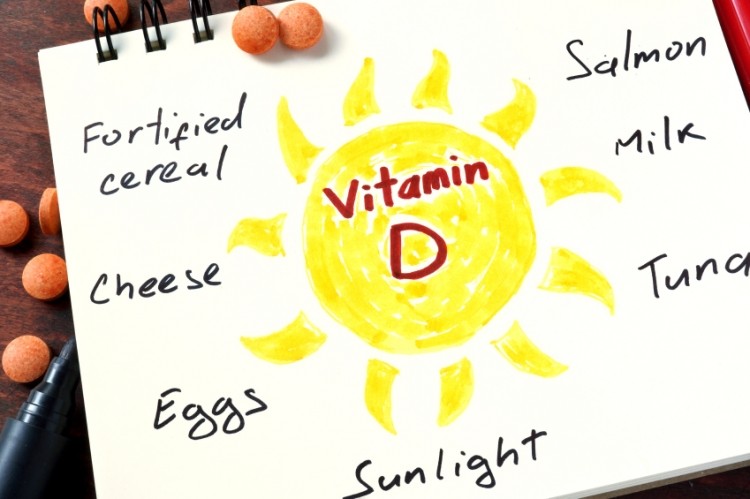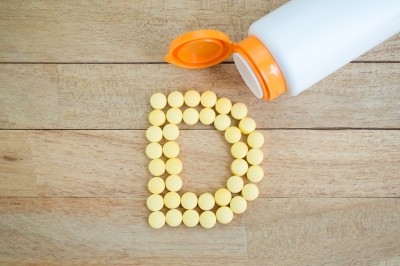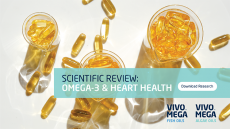Study says adequate sunlight exposure is vital
Vitamin D3 backed to prevent and repair heart damage

Collaborating with colleagues at Ohio University, study leader Dr Tadeusz Malinski concluded that the antioxidant qualities of vitamin D3 coupled with its nitric oxide (NO) stimulatory effects had a significant impact on the regeneration and restoration of heart cells.
"There are not many, if any, known systems which can be used to restore cardiovascular endothelial cells which are already damaged, and Vitamin D3 can do it," said Malinski, a professor of chemistry and biochemistry at Ohio University.
Vitamin D3 is made by the body when skin is exposed to the sun. The body’s needs can also be met via supplementation with over-the-counter solutions.
"This is a very inexpensive solution to repair the cardiovascular system. We don't have to develop a new drug. We already have it," he said.
Malinski’s comments bring to the forefront the ongoing challenge of establishing vitamin D dietary reference values (DRVs). Regulatory authorities regularly cite the complex interplay between how much of the ‘sunshine vitamin’ is generated in the body and how much is synthesised from sources like foods and food supplements.
The European Food and Safety Authority’s (EFSA) last update occurred in October 2016 in which the agency defined an adequate intake (AI) of 15 micrograms (µg) per day for healthy individuals over one year of age.
The value, which also includes pregnant and lactating women is slightly more than the DRVs set for infants aged 7-11 months currently at 10 µg per day.
The recommendations, which were ultimately adopted in the EU, forced the UK government to actively recommend the consumption of food supplements in order for people to achieve the levels advised.
Study details
Dr Malinski's unique approach used nanosensors 200–300 millimetres (mm) in diameter with a detection limit of 1 nanometre (nM) in human umbilical vein endothelial cells.
These nanosensors were deigned to detect nitric oxide (NO) and peroxynitrite (ONOO-) concentrations in situ in the endothelial cells of African American (AA) and Caucasian American (CA) donors.
The balance and imbalance between NO and ONOO- concentrations ([NO]/[ONOO-]) were monitored as NO plays a central role in the regulation of blood flow and the prevention of clot formation. It is often used as an indicator of a healthy cardiovascular system.
Vitamin D3, a potent stimulator of nitric oxide (NO) and peroxynitrite (ONOO-) production, was also assessed as to its ability to reduce the level of oxidative stress in the cardiovascular system.
The team found Vitamin D3 treatment significantly reversed [NO]/[ONOO-] in AA and CA subjects at levels exceeding that observed in the normal endothelium.
Vitamin D3 also restored endothelial function by increasing NO concentrations and decreasing the cytotoxic ONOO-.
“The beneficial effect of vitamin D3 is associated with a favourable rate of NO and ONOO- release, restoration of the [NO]/[ONOO-],” the study observed.
“This effect of vitamin D3 may prove to be beneficial in the treatment of hypertension and other cardiovascular diseases, including heart failure, myocardial infarction, vasculopathy, stroke and diabetes.”
Vit D in bone health
In recent years, the clinical setting has recognised patients who have had a heart attack would also have a deficiency of D3.
“It doesn't mean that the deficiency caused the heart attack, but it increased the risk of heart attack," Dr Malinski said.
"We use nanosensors to see why Vitamin D3 can be beneficial, especially for the function and restoration of the cardiovascular system."
This observation only adds to the library of research that suggests vitamin D3’s central role in the restoration of the heart’s structure after an attack, brain structure and function after a stroke, diabetes and atherosclerosis.
More work also points to vitamin D3 administered at doses higher than those currently used for the treatment of bone diseases, may be highly beneficial for the treatment of the dysfunctional cardiovascular system.
Source: International Journal of Nanomedicine
Published online ahead of print, doi: 10.2147/IJN.S152822
“Nanomedical studies of the restoration of nitric oxide/peroxynitrite balance in dysfunctional endothelium by 1,25-dihydroxy vitamin D3 – clinical implications for cardiovascular diseases.”
Authors: Khan A, Dawoud H, Malinski T
















